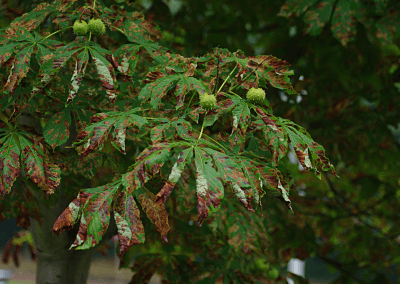
On the outside, you may think your tree is perfectly fine. But what if it’s not? An unhealthy tree can cause a lot of damage, including fallen limbs and even infecting other, nearby trees. It’s important to inspect all the trees on your property, at least once a year, to see if any of them are sick. To help you out, follow these five warning signs to tell if your tree is sick.
The Bark is Abnormal
One of the most obvious signs that your tree is unhealthy lies in the bark. This is the first step to see if your tree needs a bit of help.
The bark layer of a tree works as a protector. It should be solid so that the inner part of the tree is completely protected. A major red flag with your tree’s health is if the bark has a large split in it. There may also be holes in the bark.
When looking at the structure of your tree’s bark, be sure to look all around the tree and even higher up. While weakened bark often happens at the base of a tree, it can also manifest in higher branches, so you may need to use a ladder.
Your Tree is Decaying
If your tree is decaying, or rotting from the inside, it can be hard to see if there is a problem. However, a weakened tree does have some tell-tale signs.
Look for mushrooms or other fungi that are growing on the outside of your tree. Mushrooms like to grow from rotting wood, and if they like your tree, then it is a sure sign your tree is sick.
Some fungi can look similar to bark, so you will need to perform a close inspection. Look for fungi that is circular in appearance, almost in a specked manner.
Another sign your tree is sick is if the bark crumbles when touched. Take a small piece off your tree. If it holds tight, then your tree is probably fine. If the bark crumbles in your fist, then your tree is sick.
There are Dead Branches
There is always a reason your tree has dead branches. And most likely, your tree is sick. With larger, bushier trees, it can be hard to tell if there are dead branches. However, dead branches are more than just a sign your tree is unhealthy. Dead branches are a very big hazard. A windstorm can bring these weakened branches down, causing damage to your home or even a person.
A good time to look for dead branches is during the spring when buds and leaves are starting to come out on branches. Look for branches that are bare. You will want to perform this inspection before summer when fuller branches hide weakened branches.
The Leaves are Discolored
Leaves should look a vibrant green in summer and a rusty gold or red in fall. If they are different colors, then your tree is likely sick.
Take note in summer to see if there are any leaves that are discolored. Often, only a few branches will be sick and so part of the tree will have brown leaves while the rest will still be green.
If some of the leaves are discolored, take a closer look at the branches to see if they are dying. The good thing is that these branches may be removed to keep the rest of the tree healthy.
The Tree is Lopsided
Trees should grow straight up and they should be symmetrical. If they aren’t, then there’s a good chance your tree is sick.
A lopsided tree means at least half of it isn’t getting enough nutrients and as a result, it isn’t strong enough to stand tall. The biggest risk with a lopsided tree is that it may fall over due to the imbalance, thus potentially causing damage to your property.
One reason your tree is lopsided is because it is growing around something like another tree or even the foundation of your house. If there isn’t enough room for the roots to grow, then this can greatly weaken the tree. The result would, again, be that the tree could fall over and cause damage.
While cables and braces could help if a tree is crooked, you may need to remove it if it is growing into a foundation.
Going Forward
Trees are an important part of any yard and can live for decades and even centuries. However, they do require some maintenance. In addition to regularly pruning, watering, and fertilizing your trees, you also want to inspect them for signs of disease and decay.
After performing your inspection, the next step is to fix the problem. Contact Nature’s Shade Tree Care and we can discuss all your tree options.
Whether it’s removing dead branches, bracing a lopsided tree, or even removing a dead tree, we can help with all your tree care needs.
